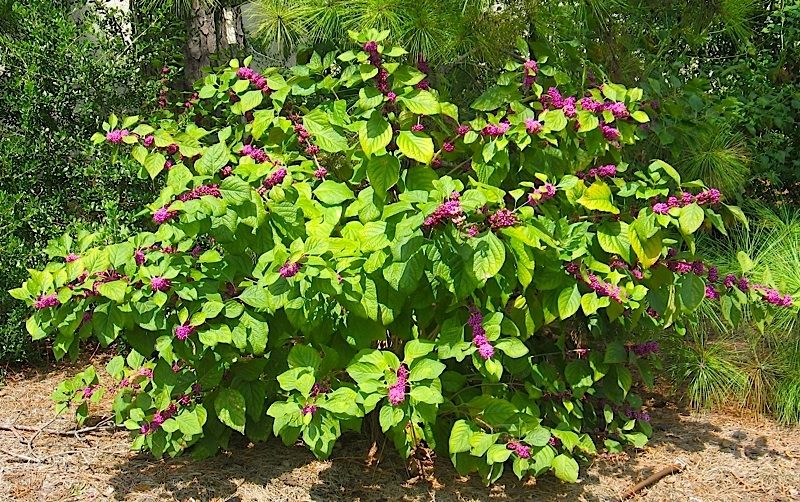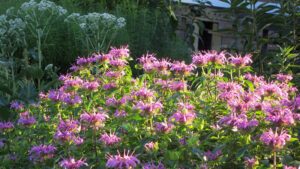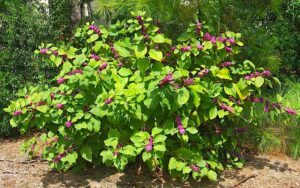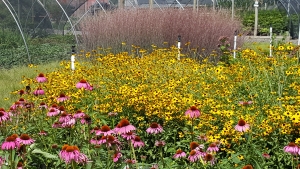Top Native Plants for Summer in the Eastern United States: A Guide for Your Garden

As summer unfolds in the Eastern United States, it’s the perfect time to bring vibrant life to your outdoor spaces with native plants. Native plants not only enhance the beauty of your garden but also support local ecosystems, providing crucial habitats for wildlife and reducing the need for excessive watering and fertilizers.
In this blog, we’ll explore some of the best native plants to purchase and plant this summer, ensuring your garden thrives while contributing to local biodiversity. Let’s dive into these stunning and resilient options that will flourish in the summer heat.
1. Black-eyed Susan (Rudbeckia hirta)
Description: The Black-eyed Susan is a classic native wildflower renowned for its bright yellow petals and dark brown center. It blooms profusely throughout the summer, adding a splash of cheerful color to your garden.
Benefits:
- Pollinator-Friendly: Attracts bees, butterflies, and other pollinators.
- Low Maintenance: Thrives in a variety of soil types and conditions.
Planting Tips:
- Sun Exposure: Full sun to partial shade.
- Soil: Well-drained, average soil.
- Spacing: Space plants 12-18 inches apart.
2. Coneflower (Echinacea purpurea)
Description: Coneflowers are known for their striking pink to purple blooms and distinctive cone-shaped centers. They are not only beautiful but also robust and resilient, making them perfect for summer gardens.
Benefits:
- Pollinator-Friendly: Attracts bees and butterflies.
- Medicinal Uses: Known for its immune-boosting properties.
Planting Tips:
- Sun Exposure: Full sun.
- Soil: Well-drained soil; can tolerate poorer soils.
- Spacing: Space plants 18-24 inches apart.
3. Eastern Red Columbine (Aquilegia canadensis)
Description: The Eastern Red Columbine features delicate, nodding red and yellow flowers that add a touch of elegance to any garden. It blooms in late spring to early summer and is ideal for shaded or woodland gardens.
Benefits:
- Shade Tolerant: Ideal for shaded garden areas.
- Hummingbird Attraction: Flowers attract hummingbirds.
Planting Tips:
- Sun Exposure: Partial to full shade.
- Soil: Moist, well-drained soil.
- Spacing: Space plants 12-15 inches apart.
4. Wild Bergamot (Monarda fistulosa)
Description: Wild Bergamot, also known as Bee Balm, is celebrated for its aromatic foliage and lavender to pink flowers. It’s a favorite among pollinators and adds a splash of color and fragrance to your garden.
Benefits:
- Pollinator Magnet: Attracts bees, butterflies, and hummingbirds.
- Herbal Uses: Leaves can be used for herbal teas.
Planting Tips:
- Sun Exposure: Full sun to partial shade.
- Soil: Well-drained, average soil.
- Spacing: Space plants 18-24 inches apart.

Wild Bergamot
5. Wild Ginger (Asarum canadense)
Description: Wild Ginger is a low-growing perennial with heart-shaped leaves and subtle brownish flowers. It’s ideal for ground cover in shady areas and provides a unique texture to your garden.
Benefits:
- Shade Tolerant: Perfect for shaded or woodland gardens.
- Low Maintenance: Requires minimal care.
Planting Tips:
- Sun Exposure: Full shade to partial shade.
- Soil: Moist, well-drained soil.
- Spacing: Space plants 6-12 inches apart.
6. American Beautyberry (Callicarpa americana)
Description: American Beautyberry is known for its striking clusters of purple berries that appear in late summer and persist into fall. Its attractive foliage and berries provide visual interest and food for wildlife.
Benefits:
- Wildlife-Friendly: Berries attract birds and other wildlife.
- Versatile: Adaptable to various soil types.
Planting Tips:
- Sun Exposure: Full sun to partial shade.
- Soil: Well-drained soil; tolerant of dry conditions once established.
- Spacing: Space plants 4-6 feet apart.

American Beautyberry
Final Tips for Summer Planting
- Watering: Newly planted natives should be watered regularly until established. Once established, most native plants are quite drought-tolerant.
- Mulching: Applying a layer of mulch can help retain soil moisture and suppress weeds.
- Soil Preparation: Even though native plants are adaptable, improving soil drainage and fertility can help them establish more quickly.
By incorporating these native plants into your garden, you’ll not only enhance its beauty but also support local wildlife and create a more sustainable outdoor space. Whether you’re a seasoned gardener or just starting out, these summer-friendly natives are sure to thrive and bring joy throughout the season.
Happy planting!

